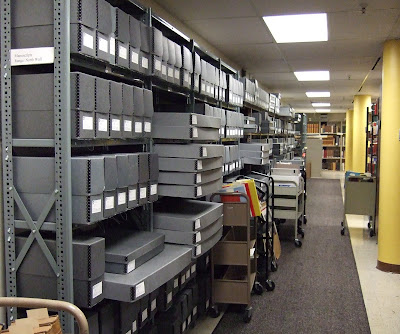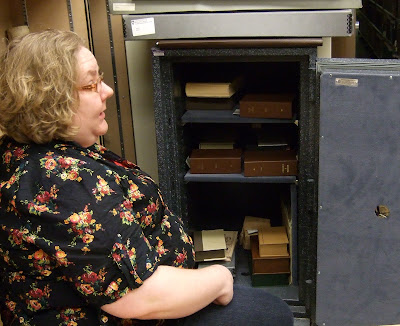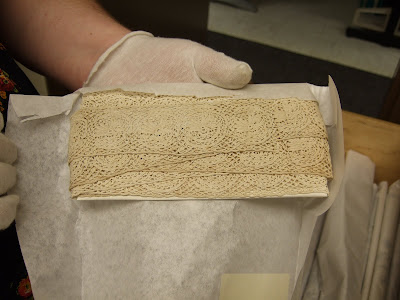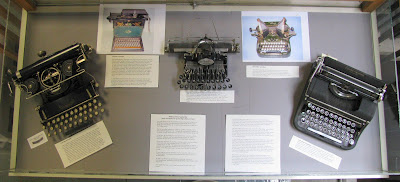If I had to sum up Brigham Young University's (BYU's) L. Tom Perry Special Collections at the Harold B. Lee Library in Provo, UT, in a few words I'd say they were "impressive," "secure," "surprising," and "epically immense." "Well-funded" also springs to mind because even in today's tight economic climate, BYU's Special Collections are funded completely through donations and endowments.
My photos could never do justice to the hugeness of the place because it would be like trying to show someone the Grand Canyon in a snapshot. "At last measure, we had 9,000 manuscript collections, 300,000 books, and 750,000 photographs," says Maggie Gallup Kopp, Rare Books Curator. The collections also include prints of feature films, audio recordings, and objects. Most of them are processed or are being processed and cataloged.
In 1999, the Special Collections were moved into their current home on the first floor of the Lee Library. Along with what seems like miles of compact storage space, BYU boasts five vaults. Yes, five. The ones I saw dwarf some of the archives I've visited.
To care for all those collections, BYU employs 13 full-time curators and manuscript processors, and two adjunct curators. The school also has a strong culture of employing student workers. Special Collections has more than 30 students who process, manage collections, and staff the reference desk.
Speaking of reference desk work, BYU estimates that the Special Collections see 80 patrons per week, who range from undergraduate and graduate students to faculty, genealogists, and outside researchers.
About the Collections
Although my visit focused on two specific areas of BYU's collections (rare books and arts and communications), I did manage a peek at the stacks in the cathedral-sized manuscripts area (below).
 |
| From BYU Special Collections |
The collections focus on seven key areas:
* Utah, Mormonism, and the West (print and manuscript)
* Music
* Arts and Communications (including film archives and film music archives)
* University History
* Photographs
* Literature (Mormon literary manuscripts, and print collections in 19th and early 20th century British and American literature)
* World History (print history, Renaissance/Reformation, history of science, Folklore Archives, and a small collection of Japanese print and manuscript items).
As would be expected of a large university, "much of the collecting focus is to serve undergraduate and graduate student research in these areas," says Maggie. A list of specific collections is available at http://lib.byu.edu/sites/sc/special-collections-home/collections/.
Three-quarters of a million photographs require a great deal of processing. In fact, BYU has a room in the Special Collections just for the student photo processing staff (a small section of the room is shown below).
 |
| From BYU Special Collections |
One of the five vaults is dedicated to photos and films. It is lit by a special yellow light to keep light exposure to the collections to a minimum. The photo below shows a print of the original "King Kong" kept in the yellowy vault.
 |
| From BYU Special Collections |
Rare Books
Because I had the good fortune of being hosted by Maggie Gallup Kopp, the Rare Book Curator, I spent some time among her favorite collection, the Victorian Collection.
 |
| From BYU Special Collections |
"It is a wonderful assortment of literature by major and minor authors and other books which document Victorian society, culture, thought, and 19th century life in general," explains Maggie. She and her predecessors have collected beautifully bound novels (below),
 |
| From BYU Special Collections |
periodicals (below),
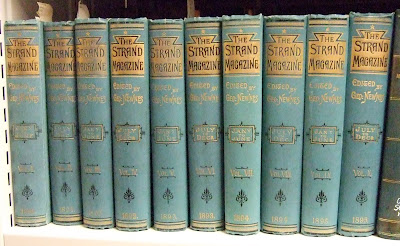 |
| From BYU Special Collections |
and a sizable collection of penny dreadfuls, among others.
In its efforts to document the history of the book as well as the history of science, BYU has collected a remarkable astronomy collection. One example is The Rudolphine Tables shown below.
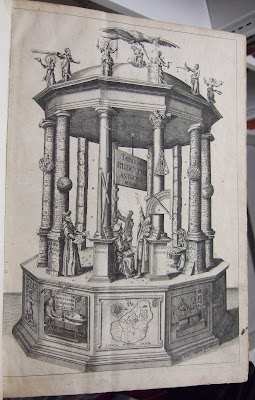 |
| From BYU Special Collections |
On her "show and tell" cart in one of the vaults, Maggie showed me a French Bible from 1468. You can see its beautiful illumination and binding close-up below.
 |
| From BYU Special Collections |
 |
| From BYU Special Collections |
 |
| From BYU Special Collections |
 |
| From BYU Special Collections |
Another "art of the book" technique Maggie showed me was fore-edge painting. The Book of Common Prayer from 1823 demonstrates how skillful book painters can be. (below) On one edge, the painter has depicted Washington, D.C., while on the reverse is an image of St. Louis.
 |
| From BYU Special Collections |
 |
| From BYU Special Collections |
Maggie also showed me some beautiful tooled leather bindings that epitomize book art (below).
 |
| From BYU Special Collections |
Another form of book art can be found in the prints within the rare books. For instance, BYU holds an 1888 copy of Oscar Wilde's The Happy Prince, which has original prints inserted in the pages (below).
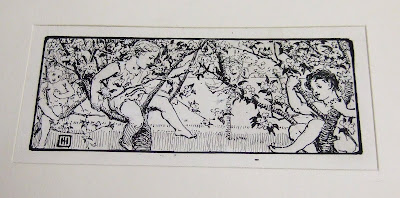 |
| From BYU Special Collections |
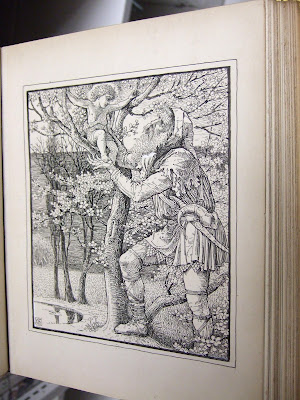 |
| From BYU Special Collections |
Utah is a wonderful place to go if you are interested in book arts. Between the University of Utah's artists' book collections and book arts program and BYU's remarkable rare books, a researcher could spend years there.
Arts and Communications Archives
Most people probably wouldn't think of BYU when naming the top important film archives outside of the Academy of Motion Picture Arts and Sciences. But they would be very surprised to see the substantial holdings at the school. For instance, the Special Collections are home to Cecil B. DeMille's papers, Argosy Pictures Corporation archives (Mighty Joe Young, among others), Merian C. Coopers' papers (King Kong and Little Women, among others), and Jimmy Stewart's papers, to name a few. Also impressive are the film music archives. But more to come on that topic.
One of the most charismatic people I have met during these tours has got to be Jim D'Arc, Curator of the BYU Motion Picture Archive. He shared some Jimmy Stewart stories and showed us some real treasures in the collections. In the short video below, Jim talks about Max Steiner's handwritten score for the Gone With The Wind soundtrack and its value to researchers. Following it are two photos of the score Jim is holding.
 |
| From BYU Special Collections |
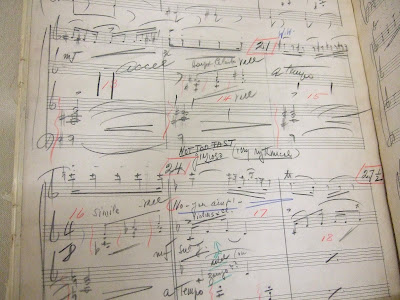 |
| From BYU Special Collections |
Earlier, when I mentioned that BYU also holds a variety of objects, I was thinking of one in particular -- Max Steiner's Oscar for Best Scoring Achievement. In the short video below, Jim tells us why this particular award is rare and important. Below the short video is a photo of the award (with a regrettable image of me taking the snapshot in the reflection of the frame).
 |
| From BYU Special Collections |
Finally, Jim gave me a real treat by showing me Steiner's original score for the King Kong opening credits. In the photos below, you can see the composer's notes to the orchestrator "King Kong Zooms Up."
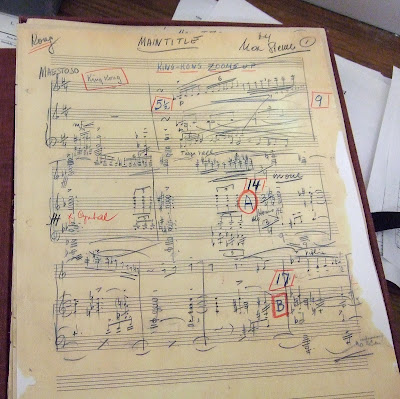 |
| From BYU Special Collections |
 |
| From BYU Special Collections |
As is the case with all of the tours I have taken, seeing a small portion of the collections just made me want to see more. In the case of BYU's Special Collections, I wish I could have seen some of the Mormon manuscripts in their vast collection. I'll just have to save that for another Utah trip.
Contact Information
Interested users and donors should contact
Russ Taylor, russ_taylor@byu.edu or
Maggie Gallup Kopp, maggie_gallup@byu.edu
L. Tom Perry Special Collections
1130 HBLL
Provo, UT 84602
801-422-3514
http://lib.byu.edu/sites/sc/










